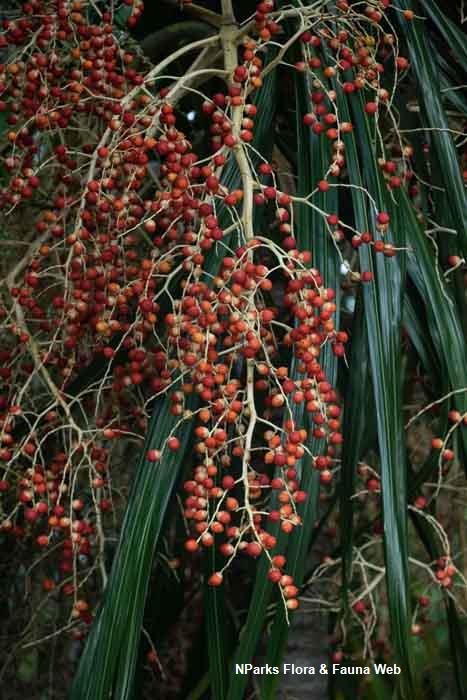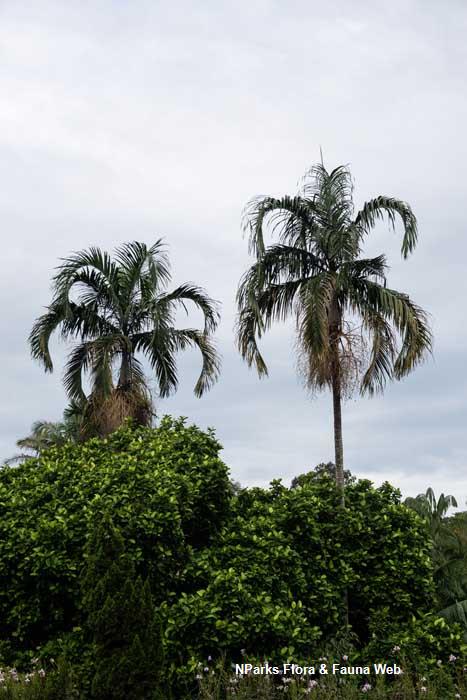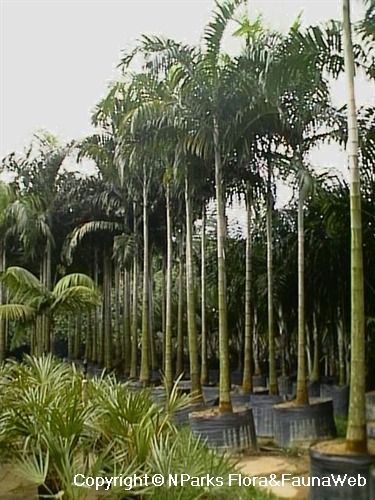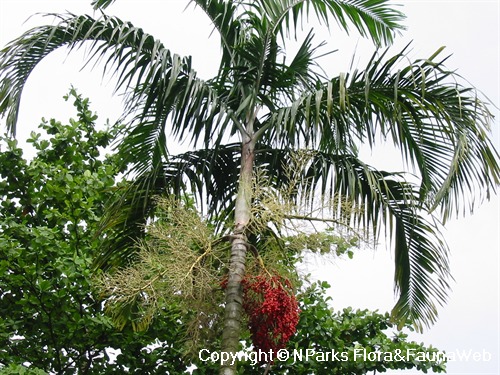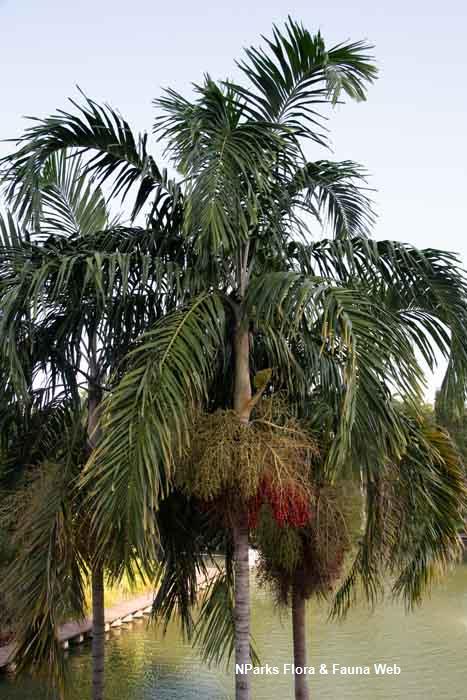
Back
Carpentaria acuminata
| Family Name: | Arecaceae (Palmae) |
| Synonyms: | Kentia acuminata |
| Common Name: | Carpentaria Palm, 东澳棕 |
Name
Classifications and Characteristics
| Plant Division | Angiosperms (Flowering Seed Plants) (Monocotyledon) |
|---|---|
| Plant Growth Form | Palm (Solitary Habit) |
| Mode of Nutrition | Autotrophic |
| Maximum Height | 15 m |
| Maximum Plant Spread / Crown Width | 3 m |
Biogeography
| Native Distribution | Australia |
|---|
Description and Ethnobotany
| Growth Form | Elegant, tall and feathery, it has distinctive plant features like slender grey trunk, green crown shaft along with a graceful dark green crown formed by its arching fronds, and is naturally occurring in lowland areas near lakes and rivers. |
|---|---|
| Trunk | Stem slender, smooth, ringed with old leaf scars (usually the leaf scars are spaced further apart on faster growing specimens). |
| Foliage | Fronds pinnate, V-shaped, spirally-arranged, about 2m long, dark green above and bluish-green beneath, with close to 100 leaflets to each frond. |
| Flowers | Inflorescences white, emerging from under the crown shaft; flowers held in groups of threes (2 males, 1 female). |
| Fruit | Fruits ovoid, about 1.5 to 2 cm long, ripening from red to black, occurring in large berry-like bunches. |
| Cultivation | Grows well in full sun thus best to place it under a bright and sunny location. Requires frequent watering and fertilising for its fast growth rate, with a low tolerance to salt and drought. Prefers medium that is consistently moist, fertile and well-drained, but is able to adapt to a wide range of soils. Reaches maturity within 5 to 6 years at a height of 10m. Growing medium can be sand, clay or loam, able to tolerate slightly alkaline or acidic soil. Susceptible to thrips. Caution: The exocarp of the fruit contains calcium oxalate crystals, which can cause irritation, and care should be taken when handling the fruit. Wear gloves if need be. Propagated by seeds. Before sowing, ensure seeds are collected are fresh. It is also noteworhty to clean the seeds from the remnants of the fruits though it is not compuslory to do so. The seeds will germinate within 2 to 3 months. |
| Etymology | The genus epithet 'Carpentaria' was named after P.de Carpenter, who was the former Governer-General of the Dutch East Indies. The species epithet 'acuminata' means 'tapering into a long point' in Latin, in probable reference to its long, thin, slender look. |
Landscaping Features
| Landscape Uses | Suitable for Roadsides |
|---|
Plant Care and Propagation
| Light Preference | Full Sun |
|---|---|
| Water Preference | Moderate Water |
| Plant Growth Rate | Moderate |
Foliar
| Mature Foliage Colour(s) | Green |
|---|---|
| Leaf Area Index (LAI) for Green Plot Ratio | 2.5 (Palm - Solitary) |
Non - Foliar and Storage
| Trunk Type (Palm) | Solitary Habit, Aboveground |
|---|
Fruit, Seed and Spore
| Mature Fruit Colour(s) | Red |
|---|
Image Repository
Others
| Master ID | 1313 |
|---|---|
| Species ID | 2606 |
| Flora Disclaimer | The information in this website has been compiled from reliable sources, such as reference works on medicinal plants. It is not a substitute for medical advice or treatment and NParks does not purport to provide any medical advice. Readers should always consult his/her physician before using or consuming a plant for medicinal purposes. |

